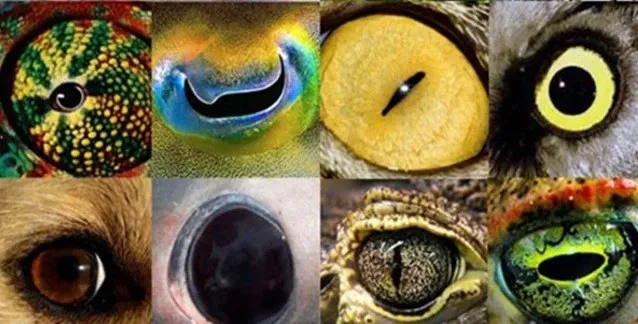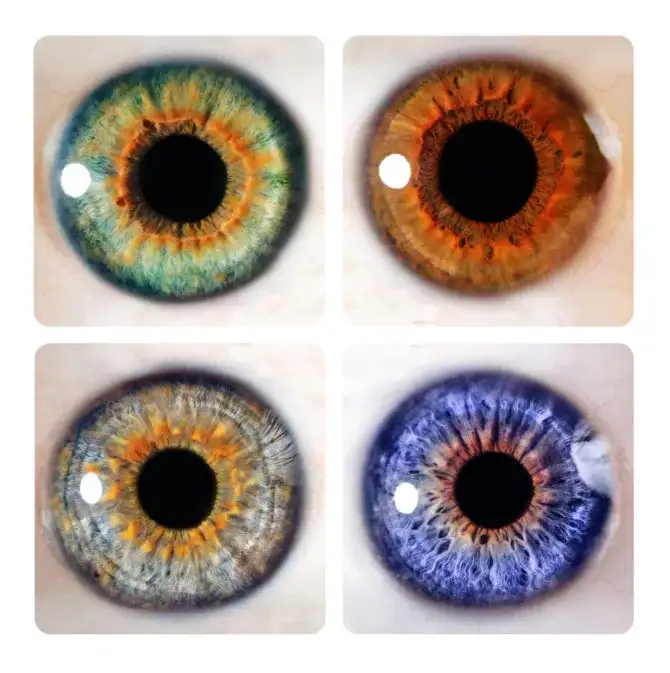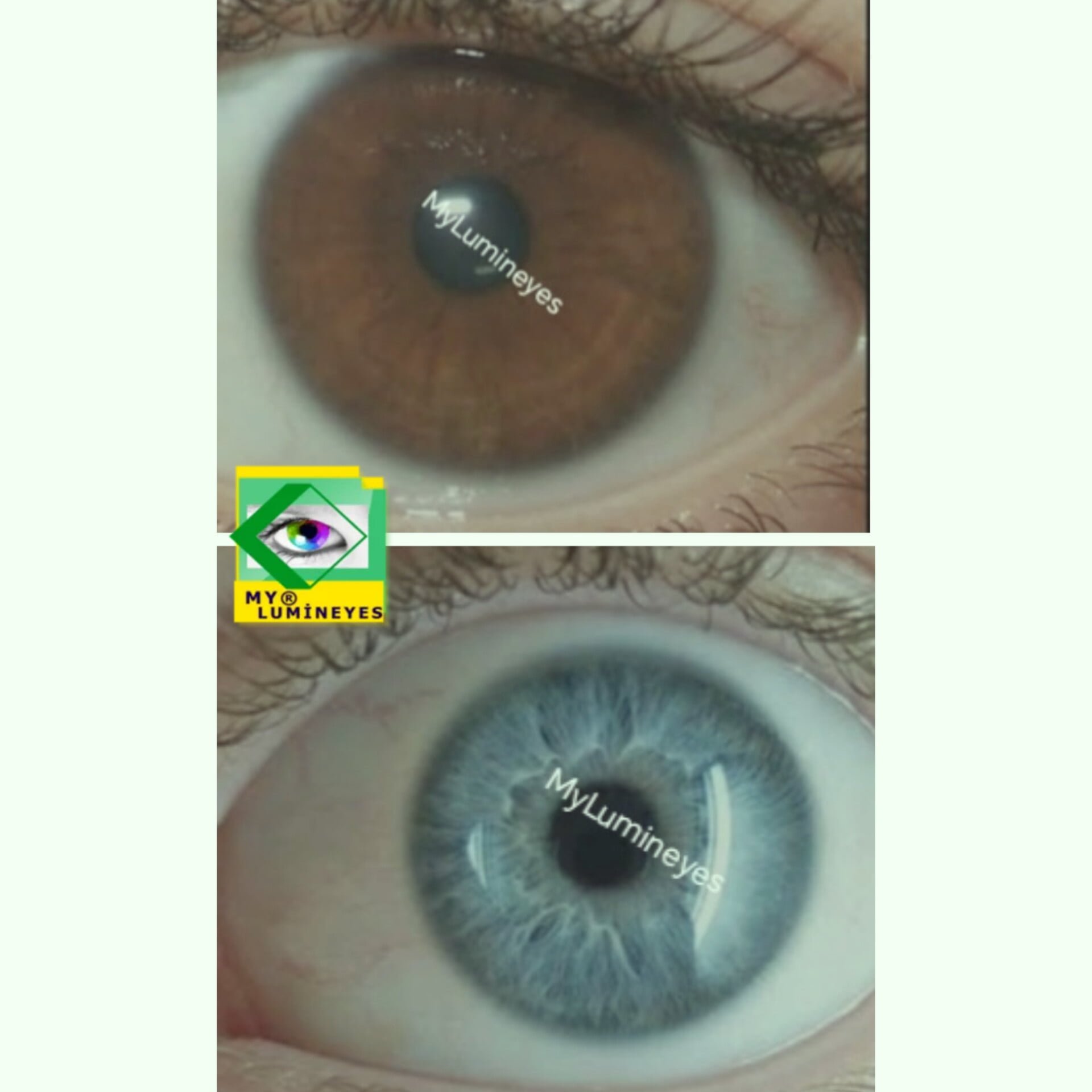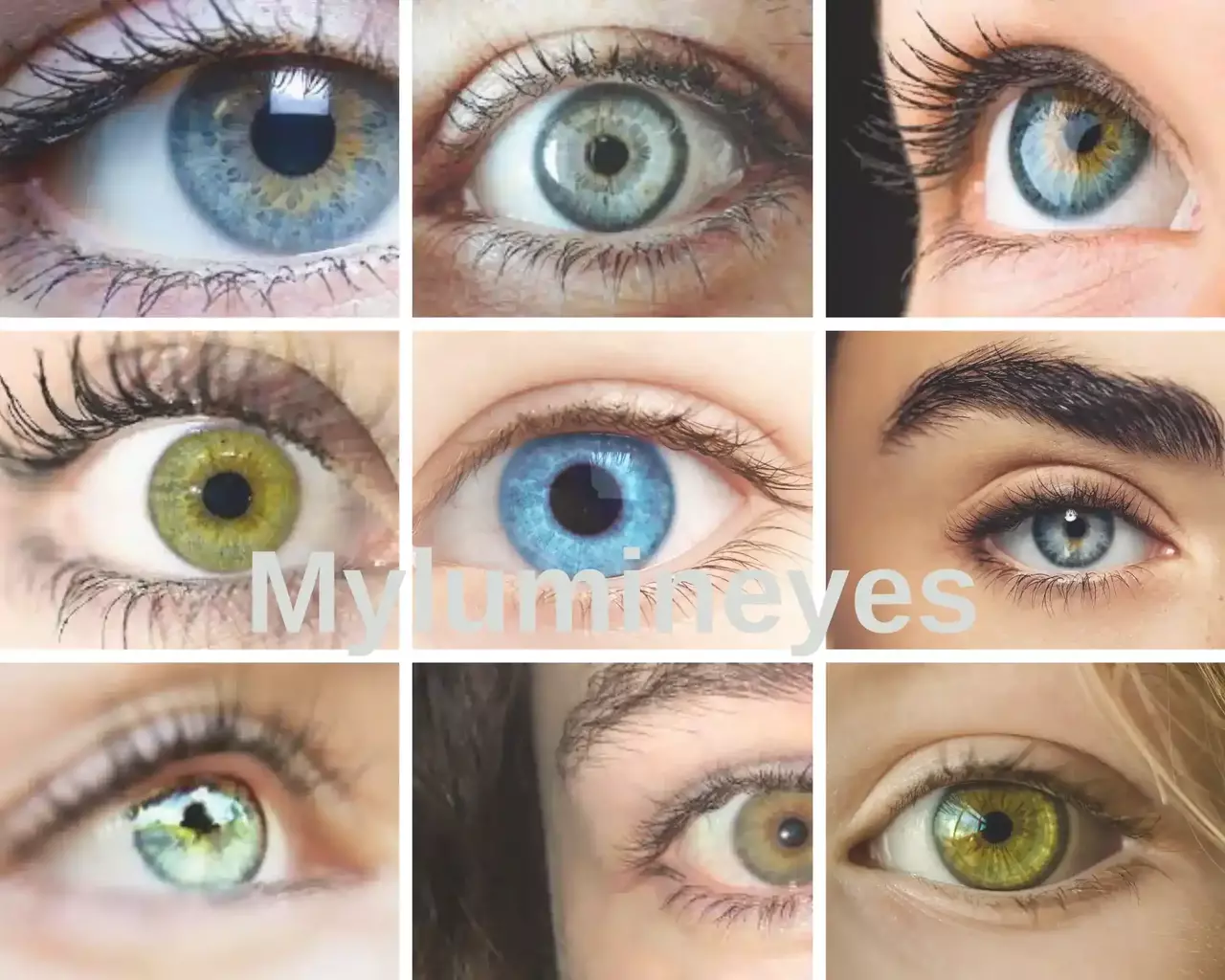The Evolution of the Eye,vision and eye disorders
The evolution of this organ, like the evolution of all other living things, is a fact, so evolutionary theories can easily explain it.The eye is one of the five fundamental sense organs, as is common knowledge. It is an organ that includes light-sensitive receptors and is primarily responsible for transmitting visual information about the surrounding objects to the brain. As said, it accomplishes this through the electrochemical sensors inside its structure. As is the case with many aspects of life, this may be expressed in tangible terms. we also learn what determines eye color?
If we take a quick look at this operational principle: For physical and chemical reasons, several sources in space produce photons.
These rays reach the Earth (or any other location) and impact these planets and wherever else they can reach on them, before being refracted by the physical laws. Due to the reflection and refraction forms of photons, the physical attributes of all things are inadvertently carried along with this reflection. Light rays falling on each point of a curved surface, for instance, will be refracted in different directions. The eye is a specialized organ for catching photons as they continually interact with their surroundings.

Sight is brought about by the brain.
The particular nerve layer controls the incidence angles, intensities, etc. of light rays entering the eye through the pupil. Their physical characteristics lead to many different electrochemical signals. Nerve cells carry these impulses to the brain, where they are examined by certain nerve cells there capable of interpretation. This review produces various compounds and, although concepts, reflexes, etc., we “believe” we have produced the proper reactions. Actually, these responses are biological mechanisms. Also not the eye but the brain is in charge of sight.
The sole purpose of the eye is to transmit information to the brain by converting incoming light rays into electrochemical signals.
Eye signals are delivered hierarchically and analyzed by parts of the brain that are specialized to interpret eye signals.
As a result of these signals, cells in various regions of the brain emit various substances, allowing us to perceive the “object” we see. Two main areas of the brain that examine eye data are the Superior Colliculus and the Visual Cortex.
In this sense, the operation of the eye is really simple and understandable. All computers and internet networks run now like the human eye.
Initially, international standards institutions develop a collection of regulations, referred known as protocols. According to these protocols, electrical circuits are manufactured, and these circuits create some electrical signals in line with these protocols. In line with the procedures, these signals are received and assessed by receivers.
Melanin pigmentation of iris determines your eye color
Similar to our skin, pigmentation determines our eye color. The iris, which is situated below the cornea (the eye’s outermost layer), consists of many layers. The two outermost are referred together as the anterior boundary. This includes melanocytes, which produce pigment. Everyone has nearly the same number of melanocytes, but the quantity of melanin they generate is determined by our genes. The same pigment influences the color of our skin, and the more we generate, the darker our skin becomes.
Eye color is determined by variances in the melanin pigment found in the anterior section of the iris. Blue eyes come from the lack of this pigment; green eyes from its presence; brown eyes from its excess. Lighter brown eyes so have rather less melanin than darker brown eyes. Every variant in eye color follows the same pattern. Blue-green eyes have melanin levels anywhere between green and blue; hazel eyes have melanin levels somewhere between green and brown; so on.
The human eye operates much as an electrical network does.
From every direction at every second, many light beams of every frequency, wavelength, and intensity enter our eyes. Each of them generates various impacts on the specialized cells of the eye. These effects are translated into various electrical impulses and delivered to the brain by these cells in the eye. By analyzing the many electrical impulses originating from the eye, the brain performs the function for which it has evolved over millions of years: it translates the data from the eye into an image.
The eye is a key organ for living things, and consequently, there is a very significant demand on it. Numerous natural elements impact ocular function, hence raising eye environmental stress. Due to this, we may see a variety of eye forms in several organisms. Each of these guarantees that the species is able to adapt to its surroundings in an optimal manner.

The organelle known as the eye point has become more specialized and can now detect the “direction” of light.
This new organelle, which has slightly more extended characteristics than the eye point, is now known as the stigma. This structure is still present in glens today. The stigma is an organelle that comprises fine crystal structures and a crimson color. Using the information from the stigma, Glena determines the direction of the light and turns her whip in that direction. In this manner, photosynthesis is always oriented toward greater light.
It is not hard to comprehend how this evolved. The edge will go to those primordial ancestors with an eye point who are likewise directed or sensitive. Because those that can get closest to the light will be able to photosynthesize the most and get the most nutrients.People who can feel the direction of the light will eventually get to the top of society thanks to this process of guided selection.
Computers and internet networks operate like the human eye-evolution of the eye
In this regard, the functioning of the eye is quite straightforward and comprehensible. Currently, all computers and internet networks operate like the human eye. Initially, international standards institutions develop a collection of regulations, referred known as protocols. These protocols claim that electrical circuits are produced and that these circuits produce some electrical signals in line with them. Reversing the processes, receivers pick up these signals and evaluate them.
The human eye operates just like electrical networks.
Different light beams of every frequency, wavelength, and strength enter our eyes from every direction at every instant. Each of them generates various impacts on the specialized cells of the eye. These effects are translated into various electrical impulses and delivered to the brain by these cells in the eye. By analyzing the many electrical impulses originating from the eye, the brain performs the function for which it has evolved over millions of years: it translates the data from the eye into an image.
The eye is a key organ for living things and consequently there is a very significant demand on it. Numerous natural elements impact ocular function, hence raising eye environmental stress. Due to this, we may see a variety of eye forms in several organisms. Each of these guarantees that the species is able to adapt to its surroundings in the optimal manner.

During this development, chemical (molecular) evolution naturally occurred, and the biochemistry of organelles and cells began to change.
The retina (retina layer)
Later in the evolution of the eye, more cells that will become the retina (retina layer) structure are incorporated into this hollow structure and the eye structure. This is due to the fact that living things evolve systems by becoming increasingly specialized. Again, the development of systems improves energy efficiency, since specialized systems can perform particular functions without addressing others.
The nervous system has developed to become the mechanism responsible for information transmission. The cells that comprise the progenitors of the retinal layer transfer the information that the chromophore turns into electrical impulses to the nervous system or the area containing the cells responsible for assessment.
The retina is a portion of the neural system in many living organisms that performs this function.
Jellyfish, for example, have eyes but no brain.This time, as said, these cells communicate the information directly to the muscles, and the muscles respond with their particular structures to this electrochemical information.l0
The concave eye point permits light to enter from a limited range, rather than from every aspect as stated. However, as this dimple grows, so will the focal point. Therefore, the eyes that are consistently more concave will be maintained, and the eye points will grow increasingly hollow. More precisely, their growth under environmental conditions will provide them an edge.
The first phase is the improvement of the success of concentrating light at a certain point by raising the refraction of incident rays amount.
By changing the light the eye gets, the second phase is to enable effective and clear vision in different light intensities. In the initial stage, a liquid was injected into the hollow eye structure. Specifically, organisms having liquid-filled eyes are in a favorable position. The refractory index of the eye’s fluids is greater than that of air; hence, when light enters this environment, it gathers and focuses on a single spot. also possible at home using lasers and transparent polymers.
The second phase was the addition of the “diaphragm,” or iris structure, to the eye.
This is accomplished via the mutual development of the muscles surrounding the eye and the eye itself. The most successful individuals in this mutual evolution obtained an edge over other species by seeing clearly in both bright and low light. Consider how the image blurs when a light source such as a spotlight is directed at your eyes. Due to the shape of the iris, living beings with eye structures evolved an eye structure that could adjust to light variations. As we’ve already said, all of this has been done through a process of gradual improvement, where each step is better than the last.
The iris regulates the size of the pupil, which influences how much light enters the eye.
The iris muscles contract and the pupil dilates under low-light conditions (or dilates). This enables for more light to enter the eye. If the environment is bright, the iris expands, causing the pupil to contract. In bright lighting conditions, the iris prevents additional light from entering the eye. Individuals with lighter-colored eyes may be more light-sensitive than individuals with darker eyes. In bright light, the iris pigment (melanin) helps filter more light. In blue or green eyes, melanin levels are insufficient to keep light out.
What or how controls eye color?
Melanin, or pigment, contained in the many iris layers controls the color of the iris. Darker the eyes the more melanin there is. Lighter eyes follow from less pigment.
Under extreme magnification, dark iris filaments resemble thick ropes, and pale iris filaments like sweater threads. As we have mentioned before, “Lumineyes Laser eye color change” reduces this pigment density, lightening the iris color so that you have colored eyes.
Today’s living organisms with vitreous humor and an iris in their eyes began to differentiate objects more clearly, obtained an advantageous position, and eventually became the dominant species in the community.
In certain people, this crystalline liquid has condensed and concentrated in a smaller region, and the lens has formed behind the pupil, which serves as the entrance to the eye. The lens’ structure mimics that of extremely thick liquids.Contracting and relaxing the regional muscles (zonular fibers) around the lens can alter the quantity of light refraction.
This helps the organism to have vision and flourish in all kinds of surroundings. The cornea, which protects the lens, pupil, and anterior chamber components present in front of the iris in modern eyes, has evolved a structure with the capacity to contract and relax thereby improving visual clarity in later periods of development.
What is surgery to change eye color?
What makes Lumineyes Xtra special and superior? The My Lumineyes laser identifies and focuses on pigments called melanin in the eye. Melanin-producing cells undergo a process of chemistry after receiving the laser radiation of Mylumineyes. Following this physiological and molecular interaction, the human body’s defensive mechanism activates.
This procedure is typically used to eliminate melanin cells from the body. The “Mylumineyes Laser Eye Color Change Procedure” uses natural reactions from the body to carry out the process in this manner. The two most crucial elements to think about if you are considering using lasers to change the color of your eyes are who your physician is and the level of proficient he is.
“Lumineyes laser eye color change surgery” was created by surgeon Mustafa Mete. It is often accomplished via the construction of personalized mappings.
It stands out in the globe due to its distinctive characteristics. We have a total of thirteen years of experience doing laser eye color change procedures. To be honest, the Mylumineyes technique is the easiest and most dependable way for changing a person’s color of eyes. The 8G+ Mylumineyes laser, the most secure type of laser readily accessible, was used to make this piece. It is critical to recognize the fact that this laser functions at a variety of wavelengths, energy, and harmonics. The significance of eye color change exams cannot be overstated. Finally, they will show us the outcome of our eye color changing.
How does eye color grow?
Eye color is quite much influenced by genes. Though rare, some genetic variations might surprise two blue-eyed parents by resulting in a brown-eyed offspring. Most often occurring iris color worldwide, brown is genetically dominant over all other iris hues.
Green eyes are the rarest eye color, occurring in fewer than 5% of the global population. Although there are an infinite number of color combinations, the primary color groups are brown, blue, gray eye color, hazel, and green eye color.










